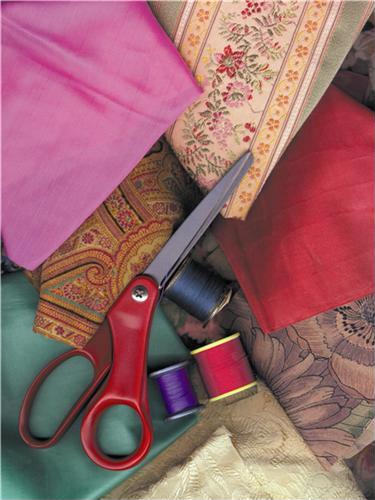
If you're remodeling a room or you're designing the interior of a new home, you're probably going to focus on the windows at some point. While light-controlling pleated shades or faux blinds are your first design decision, afterward you'll need to focus on the final, decorative layer - curtains. If you're not willing to shell out the cash for expensive fabrics and luxe details, why not get a little creative with a DIY project or two? Here are two window treatment ideas to consider.
1. Custom panels. If you already have a set of panel curtains that seem to be working just fine, you might be able to get away with using the same curtains in your new scheme - with added fabric.
If they're a solid color that goes with your new plan, you can add your own fabric panels to the bottom to create longer curtains. This might be helpful in a room with low ceilings because the long vertical lines add the illusion of height. While a complementary solid color might be a fun way to incorporate the colorblocking trend into your home, you might want to go with a pattern or print for your lower panels.
Just sew the new fabric onto the ends of the curtains, measuring beforehand so you know where the bottom will hit in relation to the floor. Keep in mind that pooling curtains are chic and romantic, while tailored curtains that hit just at the floor are clean and simple ways to offset your custom blinds and shades.
2. Fabric window cornice. If valances are more your thing, you might like the idea of a window cornice, which is basically a fabric-covered box that fits over the top of the window. Believe it or not, these are relatively simple to make yourself.
Just pick up some foam insulation board and cut four pieces that will fit together to create a box. One piece will be the face piece, which is the largest, while another will account for the top piece and two more will cover the sides. You'll have to do a lot of measuring to figure out how large the pieces should be - you don't want to make them too small or too big! You'll also need to add a couple of inches to account for moldings and any other fixtures.
Use a hot glue gun to glue the pieces of board together, then take whichever fabric you're using and wrap the box with it. Do it like you would a present, with crisp, neat corners, and pin the folds in place.
Finally, install an L-bracket on either side of the window, then rest the box over it so that the top hits the brackets.

